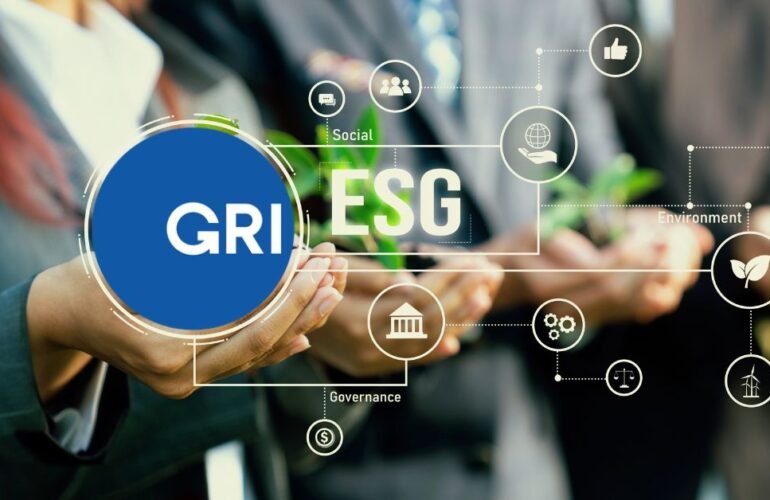For many sustainability managers, the annual budgeting cycle can feel overwhelming. You face pressure from the board to demonstrate measurable progress, from regulators to comply with new disclosure standards, and from employees to create meaningful impact. Finance teams, meanwhile, must reconcile these expectations with limited resources and competing priorities. But behind every successful Environmental, Social, and Governance (ESG) programme is not just a spreadsheet, it’s a story: a deliberate alignment of values, capital, and ambition that translates commitments into measurable results.
As companies across Singapore and the wider region commit to ambitious Environmental, Social, and Governance (ESG) goals, the challenge is no longer setting targets. The real test is execution. Building a credible ESG roadmap, resourcing it effectively, and embedding it into operations require disciplined budgeting. Disciplined budgeting means knowing where to spend, how much to allocate, and what trade-offs will produce the greatest impact.
This guide breaks down an ESG budget initiatives for 2025, the costs to anticipate, how companies prioritise, and why Environmental, Social, and Governance (ESG) is less expensive than investing in long-term resilience.
Why ESG Budgeting Initiatives Matters More Than Ever
The financial year 2025 is a turning point. Singapore Exchange (SGX) has already mandated climate-related disclosures for listed issuers in finance, agriculture, food, and energy sectors. The rules align with the Task Force on Climate-related Financial Disclosures (TCFD) and the International Sustainability Standards Board (ISSB), requiring ESG reports to meet globally consistent benchmarks.
Investors are also sharpening their lenses. Fund managers are demanding verified, comparable data rather than aspirational commitments. The demand for verified, comparable data shifts Environmental, Social, and Governance (ESG) from a voluntary exercise to a compliance imperative for companies. Falling short risks not only regulatory penalties but also reduced access to capital, higher financing costs, and reputational damage in competitive markets.
Therefore, an ESG budget is more than a compliance tool. It signals to stakeholders, investors, customers, regulators, and employees that your sustainability initiative is an integrated business priority.
Explore detailed requirements and local guidance in “A Complete Guide on Balancing ESG Initiatives with Financial Constraints” for actionable tips.
Typical Costs in an ESG Budget
A comprehensive ESG budget covers five categories: assessments and consulting, systems and tools, external assurance, training, and staffing. Each has upfront and recurring costs.
1. Materiality Assessments and Compliance Consulting
A materiality assessment identifies which Environmental, Social, and Governance (ESG) issues matter most to your company and its stakeholders. Consultant-led assessments typically range from SGD 68,000–270,000 (USD 50,000–200,000) depending on company size and complexity. Smaller firms may opt for ESG software platforms, which start at SGD 20,000–81,000 (USD 15,000–60,000) per year.
Compliance consulting, meanwhile, helps align reporting with standards such as GRI, ISSB, or CSRD. Engagements vary from SGD 20,000 to 270,000 (USD 15,000 to 200,000). For companies starting out, external consultants bridge resource gaps and provide regulatory expertise without long-term headcount commitments.
2. Data Management and Reporting Platforms
Collecting ESG data is one thing; making it auditable and decision-useful is another. Carbon accounting software like CarbonHound or Sumday costs SGD 14,000–68,000 (USD 10,000–50,000) annually. Integration with ERP systems or customized dashboards can push costs higher, but the benefits—accuracy, efficiency, and investor confidence—are substantial.
3. External Assurance
Independent assurance adds credibility by verifying ESG disclosures, much like a financial audit. Depending on the scope, costs range from SGD 34,000 to 200,000 (USD 25,000 to 150,000). In Singapore, assurance is not yet mandatory, but market trends suggest it will become standard practice.
4. Training and Capacity-Building
Building ESG literacy across the organisation ensures that the organisation does not silo its sustainability goals. Training programmes run SGD 6,800–68,000 (USD 5,000–50,000) annually, with specialist workshops costing SGD 2,700–13,500 (USD 2,000–10,000) per session. In Malaysia, HRD Corp subsidies reduce these costs, and Singapore companies can tap Workforce Singapore (WSG) and SkillsFuture for training support.
5. Staffing and Consultants
For larger organisations, an in-house sustainability team is pivotal. Salary ranges in Singapore are:
- Chief Sustainability Officer: SGD 200,000–405,000 (USD 150,000–300,000)
- Sustainability Manager: SGD 95,000–162,000 (USD 70,000–120,000)
- Analyst: SGD 68,000–122,000 (USD 50,000–90,000)
A small team could cost SGD 340,000–810,000 (USD 250,000–600,000) annually. Smaller firms often start with consultants, paying SGD 68,000–200,000 (USD 50,000–150,000) annually for advisory and reporting support.
For sector-specific frameworks and emerging standards, review “A Guide to GRI Reporting Standards: Who Can Benefit and How to Get Started” and “Six Major ESG Frameworks You Need to Know” for deeper insight into reporting choices.
ESG Budget Allocation: A Practical Guide
While costs vary by industry, most organisations structure ESG budgets around the three pillars: Environmental, Social, and Governance. A balanced allocation ensures resources go where they create maximum value.
1. Environmental (45–55%)
Most companies spend the largest share on this. Emissions reduction technologies typically take 30–40% of the total ESG budget, while waste and water management initiatives consume 15–20%. Companies also allocate 10–15% to renewable energy projects and efficiency upgrades.
2. Social (25–35%)
Community investment and stakeholder engagement typically account for 20–25%. Workforce training, DEI programmes, and employee wellbeing initiatives add another 10–15%.
3. Governance (20–25%)
Compliance infrastructure, reporting systems, and assurance services require 15–20% of the budget. Cybersecurity and data governance take up 5–10%, which is particularly relevant as ESG reporting involves sensitive operational and employee data.
| Quick Budget Ranges for 2025 ESG Planning | ||
| ESG Area | Typical Allocation | Key Spend Areas |
| Environmental | 45–55% | Emissions reduction tech, waste & water management, renewable energy upgrades |
| Social | 25–35% | Community investment, workforce training, DEI initiatives |
| Governance | 20–25% | Compliance infrastructure, reporting systems, assurance, cybersecurity |
Note: Allocation varies by industry. Carbon-intensive sectors may spend 60%+ on Environmental, while services firms may weigh more towards Governance.
For benchmarking and examples, read “Understanding ESG Strategy to Add Value for Your Business Growth”.
Why ESG Is Costlier in Year One
ESG often feels most expensive in its first year. The first year is when companies incur one-off costs such as materiality assessments, consultant retainers, software onboarding, policy rewrites, and the first external assurance cycle.
By year two, however, these costs stabilise. Internal teams grow familiar with reporting processes, and companies use consultants more selectively as systems become embedded. Year-one costs can be 1.5 to 2 times higher than ongoing annual budgets. Like digital transformation, the heavy lifting comes upfront, but the long-term efficiency gains outweigh the initial pain.
For pain point identification and solutions, visit “Addressing ESG Pain Points for Effective ESG Adoption”.
How Companies Prioritise Spending
1. Addressing Material Risks First
The biggest determinant of ESG priorities is industry exposure. A palm oil producer cannot afford to underinvest in deforestation monitoring, while a logistics firm must direct capital towards carbon tracking and fleet efficiency. Understanding material risks ensures that organisations do not waste budgets on low-impact initiatives.
2. Choosing Cost-Effective Tracking Tools
Cloud-based ESG platforms provide modular, scalable solutions at a lower cost than custom-built systems. Off-the-shelf tools deliver the accuracy needed for SMEs and mid-sized firms without overwhelming budgets. Subscription models also allow flexibility as regulatory demands grow.
3. Leveraging Public Grants and Resources
Beyond paid consultants, companies should tap available public resources. In Singapore, SkillsFuture and WSG grants can subsidise ESG-related training, while Enterprise Singapore provides guides and toolkits on sustainability standards. Similarly, stock exchanges across the region publish free compliance frameworks. Using these tools before committing to expensive external services is smart financial planning.
Discover more in “Sustainability Grants for SMEs: How to Get Funded for ESG Reporting in Singapore”.
The common thread is to prioritise where risk is highest, leverage affordable technology, and draw on public resources to stretch budgets further.
ROI vs. Budget: Striking the Balance
1. Cutting Energy Costs Through Efficiency
Investments in energy efficiency, from LED retrofits to smart building systems, often pay for themselves in two to three years. Lower electricity bills directly improve the bottom line while reducing Scope 2 emissions.
2. Reducing Waste and Disposal Costs
Circular economy initiatives, such as recycling industrial by-products or reducing food waste, cut disposal fees. For manufacturers, these savings can run into six figures annually.
Efficiency gains, risk reduction, and improved access to capital deliver tangible returns. Strategies for maximising value are detailed in “ESG Investing: How Companies Can Benefit from the Sustainable Investment Trends” and “How to Design an ESG Report That Actually Gets Read”.
3. Strengthening Governance and Reducing Risk
Governance spending, on compliance systems, assurance, and cybersecurity, may seem unglamorous, but it prevents costly penalties and reputational damage. The cost of a data breach or fraud scandal dwarfs the investment in prevention.
4. Securing Investor Confidence
Transparent ESG reporting and verified disclosures enhance access to capital. Lenders increasingly tie interest rates to ESG performance. Companies with credible ESG strategies enjoy better financing terms, offsetting upfront reporting costs.
The lesson is clear: ESG is not only a cost centre but a generator of long-term business value. The payback is real, even if unevenly distributed across time.
For further information on making the reporting process easier, see “How to Make the ESG Reporting Process Less Painful”. To align industry benchmarks and reporting standards, consult “25 ESG Regulations Investors Can’t Ignore in 2025” and “Mastering Your ESG Strategy for 2025: Effective ESG Insights”.
Paying for ESG Is Paying for the Future
The conversation around ESG spending often starts with cost, but that framing misses the point. ESG is not an overhead that organisations should trim but a form of strategic capital. Companies that treat ESG as a compliance burden will spend defensively, scrambling to meet standards while missing opportunities. Those that budget strategically position themselves to attract investors, secure better financing, and win customer trust in an increasingly scrutinised market.
At AsiaESG, clarity and credibility are the foundations of effective ESG. Our ESG Consultation and Reporting services help companies like yours move beyond aspirational statements. From conducting materiality assessments and building data management systems to ensuring accurate disclosures, we work with your team to make ESG measurable, defensible, and actionable.




